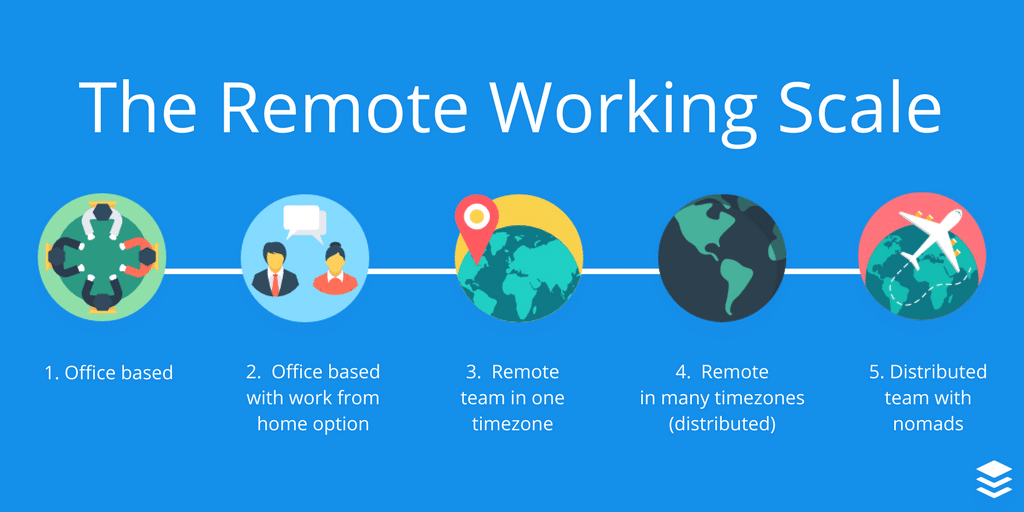I’m sitting at my regular desk at the coworking I work from here in Colombia. I pause my work for a second, looking around aimlessly. Everyone is head down staring at their screens and typing on their keyboards, either on their phone or their computer.
Here am I, thinking at this moment, how much the world has changed in only the past 10 years. It feels like yesterday that the original iPhone was released. Now everyone has a touchscreen device. A lot more people work on their computers too; many of these people either from co-working spaces, cafes or even at home.
Monitor your competition with Crunchbase Pro – try Pro for free.
That was a rarity then, yet it’s so common now. As I look around, I can’t help but wonder what is everyone doing? What are they working on? Again, the answer would have been a lot easier 10 years ago. There weren’t that many jobs you could actually do remotely. But today, the answer I get from people is incredibly varied. Unless one works in a physical job, and even then, almost every job can now be done remotely.

Photo Source: Kevan Lee, What is Remote Work? A Guide for Building Remote Teams and Finding Your Dream Work-from-Home Job (Buffer blog)
There are quite a few people at the coworking I work from. On the surface, it seems like everyone’s a solopreneur. But when you ask the people around, almost half of them work remotely for another company or for their own business, which they manage from here. Compare that to, again, 10 years ago, and the results would be close to zero percent.
Is full-remote work possible today?
The world of teamwork is changing at the most rapid pace it has ever changed before. In Does Your Startup Actually Need Office Space, we looked into the need of having an office space altogether. While the answer is still unclear, one thing’s for sure, more and more people are not working from a centralized location.
My own video game company, Power Level Studios, has never had an office. We are a team of 9 people, all working remotely. Some people are in Canada, some people in different parts of Asia, and I’m currently in Colombia.
Of course, I’m far from the only manager who allows that. Websites like RemoteOk.com lists over 600 remote-only positions and that list keeps growing. Buffer has been known to allow that for many years now. One of their long-term employees wrote about the good and the bad of working remotely on their blog.
Other companies like TaxJar are a 60-something workforce, all working remotely across the United States. They have been doing that for over 5 years now and only have good things to say about it. They even compiled this list of more than 80 reasons why they love remote work.
Having chatted on the subject with their CEO, Mark Faggiano, it was clear that they were into something. Many people are afraid of managing a large workforce remotely, but Faggiano would not have it any other way. In just a year, they grew from 27 employees up to 60, and according to him and his employees, it’s not only working, but it’s also fantastic.
What lessons can we learn from Power Level Studios, Buffer, TaxJar, and the other companies out there with remote teams?
Here are five unconventional lessons learned:
1. It has always been about the people and your trust in them
The days of micro-management are over, especially when it comes to full-remote teams. Managers who are in charge our off-site teams all report that it’s all about the trust you put in your team. “If you can’t even trust them to do their work, there’s no point in recruiting them in the first place”, said Faggiano. I second that.
In 4 Steps to Managing a Highly Effective Remote Team, I mention the importance of “Stewardship Delegation”:
“Stewardship delegation is focused on results instead of methods. It gives people a choice of method and makes them responsible for results.”, Stephen R. Covey wrote in 7 Habits of Highly Effective People.
![]()
That is how you trust your team and how you get it to thrive in a full-remote environment.
2. Culture add matters more than hard skills
Most companies I interviewed reported that soft skills matters slightly more than hard skills when it comes to recruiting a new member to their team. The key point and lesson learned by TaxJar is that you need to figure out what your company culture is. What are your values? Only then can you find and attract the right people to join your team.
In this ever-changing world, most managers realize that hard skills tend to go away really fast. What they are looking for instead, is the most-important skill of adapting to the changes of environment and technologies.
3. Online meetings work with complementary company-wide on-site events
A common theme I gathered from mostly-remote companies is that they organize weekly company-wide video calls over Zoom. All have said that these are critical for a few key reasons: it allows them to be fully transparent, keeps everyone in the loop, humanizes interactions, and more.
However, all agree that online meetings are not enough.
Highly successful remote companies like Buffer and TaxJar organize company-wide retreats. Buffer reports having spent $111,874 for a single retreat and details why it was a great decision. But you don’t have to spend that much to make it a successful event. TaxJar organizes what they call JarFest and only spent $13,900 for their latest episode.

Photo source: Derek Pando, How Zoom Employees use Zoom (Zoom Blog)
4. Communication Is Not As Hard As It Seems
This is likely the biggest concern of all. It’s already really hard to keep healthy communication when everyone is centralized, how do you make that happen with a remote team?
For one, when you trust your team, it limits the need to micromanage and reduces unproductive communication. Also, being remote, you think twice about throwing an “important” meeting, leading to less frequent, more productive meetings.
At Power Level Studios, we’ve only organized a single company-wide video call in the two years we’ve been actively developing our game. Our Slack channel is hardly active, and yet, we’ve managed to build a video game from scratch. For us, it was all about establishing strong and clear work processes that make it so we don’t have to notify others about what was done and what needs to be done next.
5. You Really Don’t Need That Many Tools
With tools we have available today, it’s easier than ever to facilitate team management. TaxJar really uses two tools: Basecamp and Zoom. Faggiano said that he’s able to manage his whole team of 60 remote employees by solely using these two tools. At Power Level Studios, we only use Slack, Trello, and Airtable.
Conclusion on managing a full-remote team
So, is managing a full-remote team science fiction or current reality?
By analyzing results from different companies, we can say that there’s a clear trend in making it happen, with tangible results on successful implementation of full-remote teams today. The barriers to entry we imagined 10 years ago are long gone and remote work is not only possible, but it’s also happening today with great success.
As I get back to my computer, after analyzing my fellow coworkers, it brings me comfort to think that such a possibility exists. It makes me reflect on a key problem the 20th and the early 21st century faced – the work-life balance issue – and it gives me hope that for once, we finally have a solution to rid of it once and for all.
What are your thoughts?
Danny is a top writer on Medium.com, writing about inspiration, self-improvement, productivity, education, entrepreneurship, life, life lessons, startups, photography, gaming, travel, and more. Outside of writing, Danny is a serial entrepreneur, software engineer, photographer, constant learner, learning and productivity coach, public speaker, and husband.



